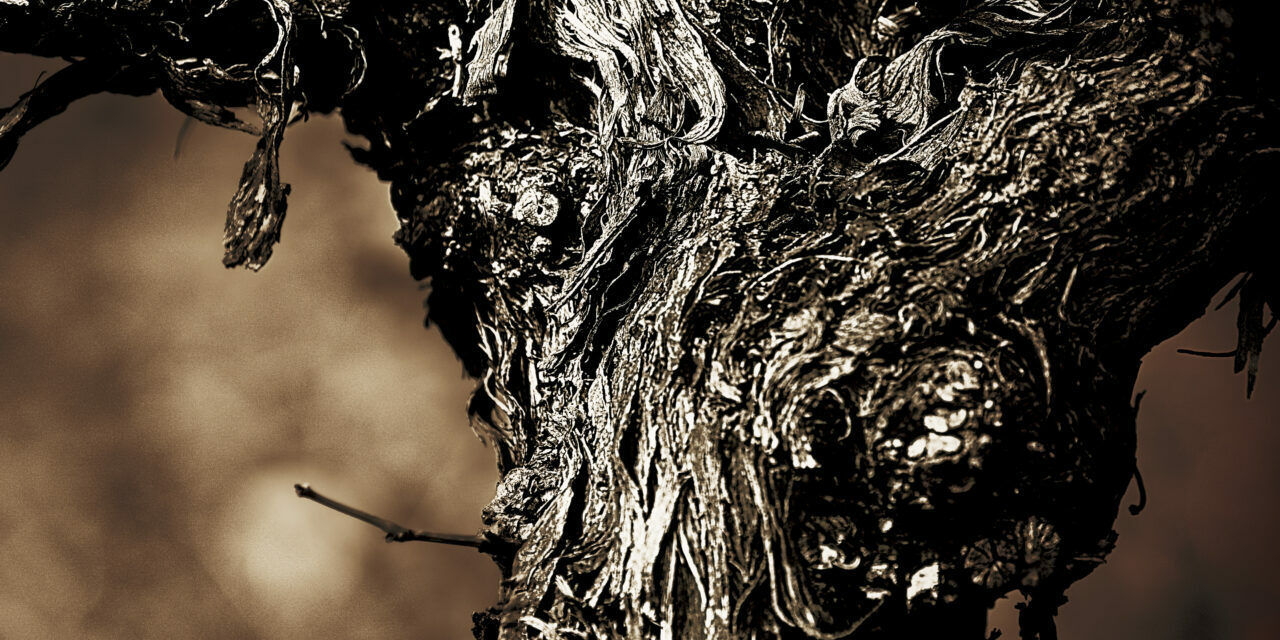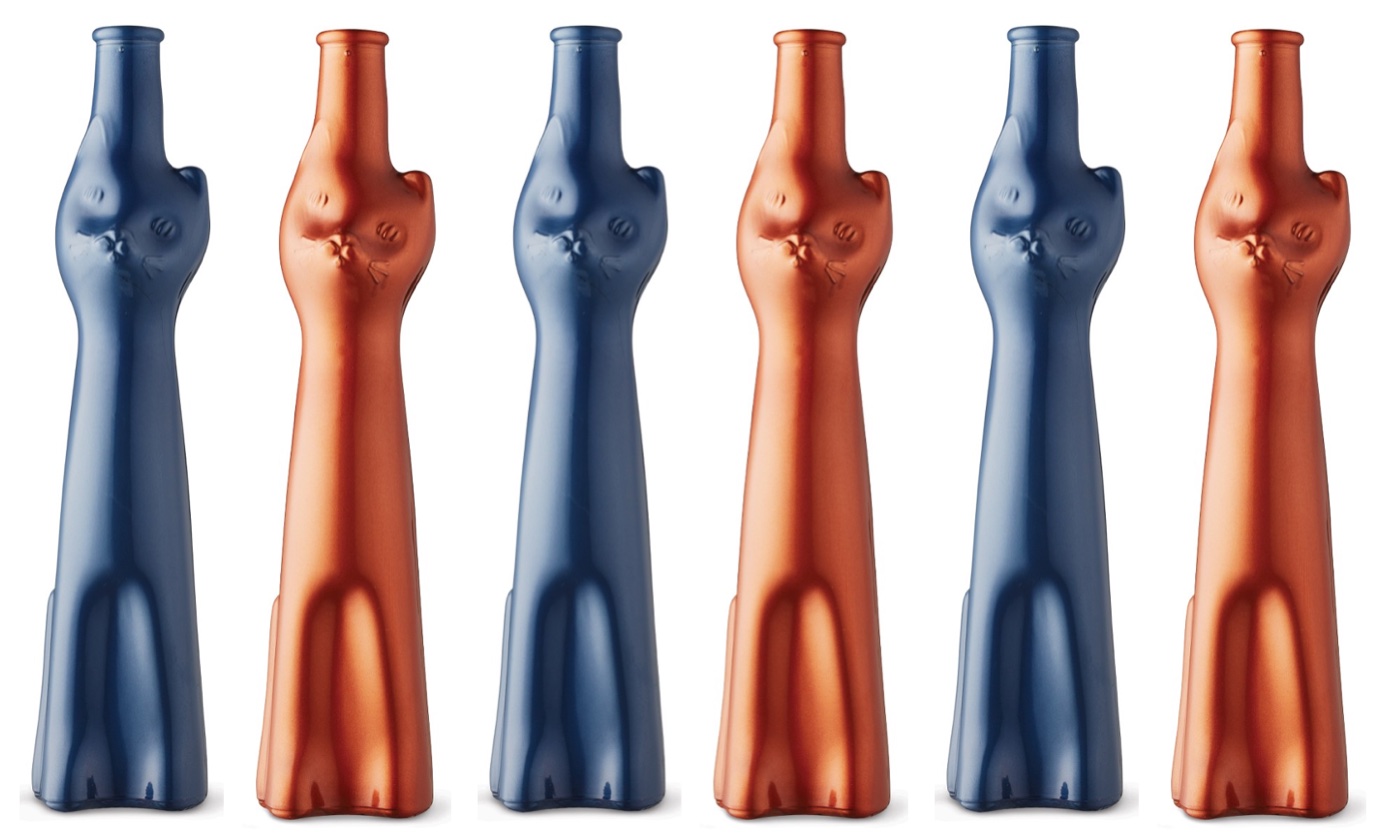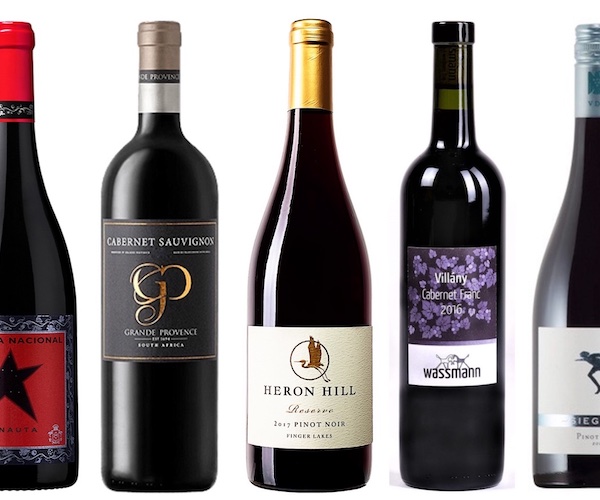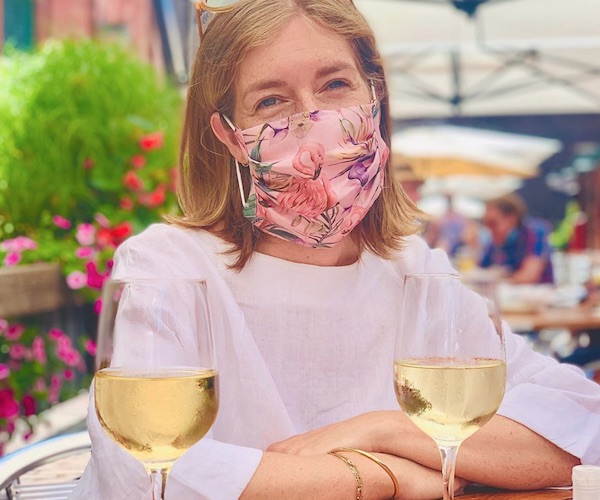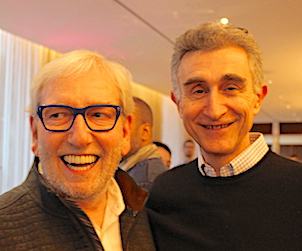This article is part three of a three-part feature on old bush vine Chenin Blanc from South Africa.
The concept and motivation to write an article entitled ‘The Old Vines Made Me Do It’ came from listening to Andrea Mullineux of Mullineux & Leeu Family Wines talk about old vine Chenin Blanc. In her address, she eloquently shared that the old vines were the reason she landed on making wine in South Africa.
The concept of a three-parter came from doing the work; writing the article. I realised that the story of old bush vine Chenin could only be told with the sum of its parts. Part One -The History of Wine in South Africa, Part Two – The Impact of Government on South African Old Vines, and this, Part Three – South African Old Vine Chenin Blanc Today.
By using the lens of time to look at South African Chenin Blanc methodically, we can clearly tell its story.
SOUTH AFRICAN OLD VINE CHENIN BLANC TODAY
With the motivation of Andrea Mullineux in tow, I lined up discussions with brilliant and passionate wine authorities and academics on the topic of Chenin. Talks with Dr. Edo Heyns of AdVini, Louw Strydom from Ken Forrester Wines, Nicholas Pearce of Nicholas Pearce Wines, and André Morgenthal from the Old Vine Project contribute to building this article; the final and third part of the series.
THE OLD VINE PROJECT
The end of apartheid saw global markets open up to South Africa and wine and spirits restrictions changed to support a more fair market that did not favour the cooperatives.
Mandela was released from prison in 1991. Apartheid was abolished in 1994, and the first democratic election was held that year, when all South African adults could freely vote, regardless of race. It was clear there was an exciting era ahead for South Africa.
When the government dissolved the KWV cooperative, it created the South African Wine Industry Trust (SAWIT) in 1999. SAWITs ultimate goal was to transform and restructure the wine industry post-KWV regulation. Their mile-high management made it possible for the growth-based work that many in the wine industry were trying to do or doing on a small scale to now gain some supported momentum. One such initiative was The Old Vine Project (OVP).
The oldest registered Chenin Blanc vines in South Africa date back to 1942 and are in Stellenbosch. Stellenbosch also happens to be the region in South Africa with the most recorded old vines. The accessibility to such information would never be possible without the efforts of the Old Vine Project.
The journey to document South Africa’s old vines was started in 2002 by vineyard manager Rosa Kruger. Before the inception of OVP, Kruger had spent much time travelling across Europe and tasting wines made from old vines. Understanding the ethereal nature of these vines, she became curious about the old vines in her homeland of South Africa, and this led her down the path of old vine fact-finding.
“The Old Vine Project (OVP) wants to preserve as many old vines in South Africa as possible. We believe that many of the 4,004 hectares of old vines could make wine with a special character and purity. We believe that older vines bring another dimension, a new character that tells a story of our land, our culture, and our history.” Old Vine Project website.
I wanted to learn more about South Africa’s Old Vine Project, so I connected with André Morgenthal, the Project Manager for the OVP initiative, and a passionate spokesperson for the program.
When André and I finally connected, no time had passed in our conversation and André was right into it, telling me about a significant old vine feat that happened just that morning. They were transplanting vines that were over 100 years old to a new location, all in the name of preservation. The farmer could not afford to keep the 100-year-old vines because of their low yields.
“We transplanted 50 vines that were over 100 years old into a new block [of land]. The grower really wanted to pull out those vines for the past three or four years. He’s a smart farmer, with multiple farms and a weaker block that produces, let’s say, about a ton per hectare is not worth it for him,” says André.
The story André shares about the farmer with a concern for yields coming from old vines is not new to the OVP. Since its formal commencement in 2016, much of the group’s activity has been around old vine advocacy and spreading the project’s worth and would-be financial gains. Morgenthal notes that the cooperatives were extremely hard to convince, and it was a task that took him over four years to do. Over time, and with the hard work of OVP leaders, the project has gained momentum, with more and more industry experts, scientists, and farmers touting its praise.
“It [OVP] gives better quality wines and puts pressure on raising grape prices. In my opinion, everybody wins,” says Nicholas Pearce of Nicholas Pearce Wines.
In 2019, the University of Cape Town’s Graduate School of Business conducted a study to measure the value of old vines. They considered that old vines produce lower yields but also produce a product of higher quality and sticker price. As the University put it, they wanted to see if the message on the value of old vines was factual or simply “sentimental”. Their research showed that old vines added an estimated 30% to 50% to the price of the bottle! This proves that the old vine’s impact on the sale price of a bottle of wine is quite significant. The increased revenues furnish farmers with additional money to do things such as improve farmworker wages, housing, and viticultural practices.
“A producer can say I am only going to give you x rand per ton, and then you are a price taker. Now, if your vineyard is 35 years old and registered as an old vine, you can be a price setter.” Louw Strydom, Ken Forrester Wines.
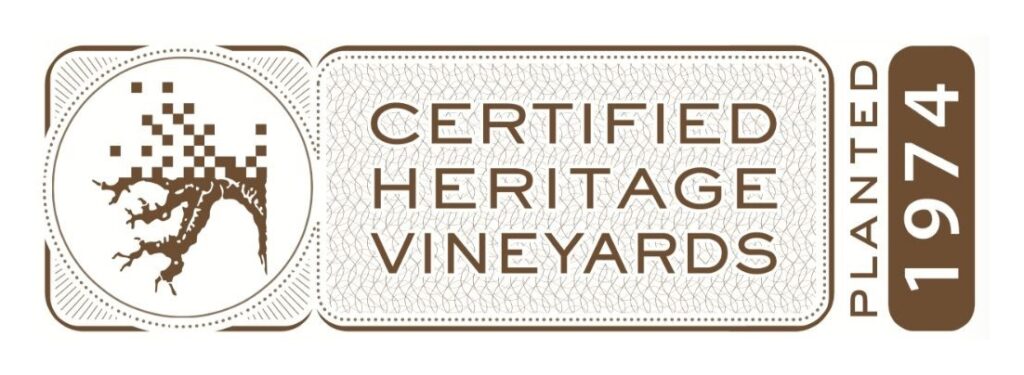
To become a member of the Old Vine Project, vineyards must be at least 35 years old and registered with SAWIS. Membership grants you the right to use the Certified Heritage Vineyards seal (the first of its kind in the world) on your bottle of wine. This seal is a sign to the consumer that the grapes in the bottle are of historical significance and emanate quality.
As of 2021, 4% of the vineyards in South Africa, or 4,004 hectares, have been certified under the program. That number is steadily growing as farmers recognize the benefits.
“Some of our members are without old vines,” Morgenthal says. These grape growers with vines that are soon to come of age (35 years) are thinking ahead on how best to utilise the story and the advantages of old vine preservation and winemaking, and are investing early.
The OVP is tasked with doing much more than logging vine age and managing the Certified Seal program. The things that fall under its hands-on approach to member benefits are crucial to its success. Morgenthal’s example of transplanting vines for a farmer is one, and their Old Vine Pruning program another.
With the most significant objection to old vine preservation being yield and how that correlates to ROI, the OVP has begun working on a series of workshops that focus on training farmworkers on the art of pruning old vines. I call it an art here because after speaking to André, you realise it is just that! The OVP proves that if appropriately pruned and cared for, you can increase the yields from old vines. As a result, they travel to member farms and train farmworkers in the old vine methodology of pruning and tool maintenance and what their job means to the end products’ value. André mused that when he is out on pruning theory workshops, he tells the trainees to “be gentle with them [old vines]. They are ageing people. Be quiet and listen to their wisdom.”
So far, all indicators show that only positives have come out of the work being done by the Old Vine Project, and this includes a review of results from single-holding vintners to cooperatives.
“There is an old vine Chenin vineyard here. Their grapes used to go to a cooperative that’s got lots of members, and the grapes got blended away into a generic Chenin Blanc, which was sold at R60.00 to R70.00 a bottle. With the advent of the Old Vine Project, they [the cooperative] started their Old Vine Range, and that particular block vinified into an old vine wine now sells for R300.00 per bottle. It has totally changed the business model of that cooperative”, shares André.
OLD VINE CHENIN AND ITS QUALITY
Unlike many grape varieties, Chenin Blanc is the one that has no business being geo-compared. Not because one region’s expression of Chenin Blanc is better than another but because they are so wildly different. We are particularly looking at the Loire versus South Africa here. The InterLoire itself has also expressed its recognition for the uniqueness and gentility of South African Chenin.
In 2020 the InterLoire collected old Chenin cuttings from South Africa that they considered the best Chenin Blanc encountered in the area. The trip was organised by André Morgenthal and attended by Dr. Edo Heyns as a regional representative. This scouting expedition is seen as archetypal in the works we can expect from the study of old bush vine Chenin in South Africa. On this vineyard road trip, the InterLoire discovered Chenin Blanc selections that were extinct in France. Though the parental matter of these vines were cuttings from France and planted in the 17th Century, what you see today is an adaptation; vines adapting to their current environment. Finding these once thought to be extinct strains of Chenin Blanc, the InterLoire was delighted. Once cleaned up and tested, the vine cuttings were planted in the clonal garden of the InterLoire for study.
Listening to the account of vine sharing for research reminded me of the time I heard a Tuscan vintner talk about clonal diversity and how that could help them with climate change. The same thought comes to mind here. South African Chenin Blanc vines have had to adapt to warmer temperatures, much warmer than what they were accustomed to in France. Could they now be a Loire Valley solution as farmers everywhere look for answers to combat climate change?
Currently, it is estimated that 30% of the old vines in South Africa are Chenin Blanc. That number is growing year over year. The distinction in flavour and texture that these vines provide cannot be argued. When I asked Louw Strydom what makes old bush vine Chenin unique, he shared that “as Chenin Blanc vines get older, they really have a way of showcasing the terroir and the region way more in-depth than the younger vineyards do.”
I’ve had the Ken Forrester FMC and the Sparklehorse Cap Classique and can attest to what Louw says.
Louw further explains that outside his window, he is looking at one vineyard plot of Chenin Blanc planted in 1974 and one planted in 2013. “The 74’ has a different understanding of its terroir and sense of place, and it’s way better adapted to telling that story”.
A deeper dive into South African Chenin Blanc only gets you wrapped up further. South Africa’s diversity in micro and mesoclimates makes it so that no two Chenin Blanc wines are the same; this is independent of the winemaking style. Dr. Edo Heyns speaks to the diversity of Chenin in South Africa by getting specific and sharing his love of Chenin Blanc from Faure. Faure is a small suburb of the Western Cape, nestled in the Helderberg wine region. Placing Faure on the map, many would not have thought the grapes here could be that different from the lands that closely surround it, but they are.
In writing this article, I have had a chance to taste stellar examples of old vine Chenin Blanc from South Africa. For example, the Pearce Predhomme, Old Vine, Wild Ferment Chenin Blanc. Its crisp acidity and spicy honeysuckle palate showed one highly enjoyable expression, whereas the Mullineux Kloof Street Chenin Blanc took a step into luxury. Kloof Street flaunted well-integrated oak, an excellent backbone of acidity, and noticeable vegetal notes. These wines were no primer for what I would get with the Ken Forrester Sparklehorse Cap Classique. Of course, this is a different wine style, but you can still pick up the nuances in the base wine. Ginger, apple, and pear are showcased amongst a delicately fine mouse. Though we’re speaking of grounded and experienced winemakers here, and one of them labelled as the king of Chenin (Ken Forrester), Dr. Heyns speaks respectfully about what he is also seeing from up-and-coming winemakers in the region.
Dr. Heyns claims that the positive feedback from notable people about South African Chenin is motivating.
“There are so many young South African winemakers that have been inspired by this opportunity and are really putting effort into producing stunning Chenin,” says Dr. Heyns.
CONCLUSION
South Africa, once a wine region of lesser quality, is now the area in the world that is championing the old vine movement in a formulaic way deepened with fact-based traceability, statistics and research. It could be argued that because of them, we’ve seen a rise in old vine preservation, and community study internationally, but primarily in the new world.
The Barossa Valley Old Vine Charter, for example, was instituted in 2009 to methodically log old vines that could be authenticated through formal records. We also have Jancis Robinson’s Old Vines Register, which started in 2010. It is a sort of crowd-sourced resource that captures old vines from around the world based on reports. Furthermore, we now have Old Vine Parties, Old Vine Awards, and specified Old Vine Conferences. Thank you South Africa.
No matter how it’s viewed, there is a romanticism, and rightfully so, with old vine Chenin Blanc. I think Dr. Edo Heyns summed it up nicely when he referred to Chenin Blanc as the Cinderella Story of South Africa. “It is the South African workhorse that has suddenly become the stallion.”
Drinking Chenin from South Africa today is indeed a journey. Differing wine styles aside, the differing characteristics of grapes found from one sub-region to the next makes this an exciting part of the world to explore, with a finite view of wines produced from old vines.
To close, I want to be clear that all this talk of old vines does not mean the young ones are inconsequential. They are needed to make younger and accessibly priced wines for the market, and also for blending from time to time. Most importantly, with the proper care and diligence, these young vines grow up to be the ageing people with the wisdom and grace that André Morgenthal speaks so adoringly about to all he meets.
The old vines made me do it!

